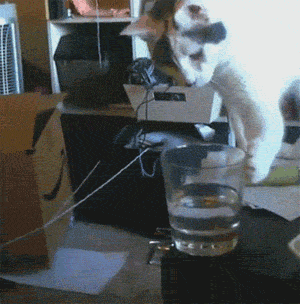Keep on improvingKaizen o tsudzukeru
Kaizen and minarai: Continuous improvement and the Made by Many summer internship

Continuous improvement happens on most things round here and the internship programme is no exception. Since 2012, Made by Many has opened its doors each summer to a team of interns; each year we learn more about how to improve ways of working, communication, learning and how we can deliver the best possible experience for our interns.
Kaizen is Japanese for ‘continuous improvement’ and is a concept applied across business, from the CEO to the factory floor. Minarai means ‘apprentice’ — I could have used the loan word ‘intān’ but opted for something more lyrical.
This summer, we have Nadine (designer), Noémie (product manager) and Madeleine (technologist) working together for ten weeks with Behavioural Insights Ventures, to apply a customer-led design approach to an existing MVP.
So what have we changed up for 2017?
- Recruitment
- Approach to training
- Focused brief vs divergent discovery
- External client
- Mentor model
Recruitment

Internship programmes attract a lot of applicants and given the time it takes to sift through them all, we were on the lookout for a way to massively reduce the time involved without reducing the consideration we were giving to applicants. Additionally, we wanted to improve our hiring process to improve the diversity of applicants.
To do this, we signed up to Applied, a behavioural science driven platform* that reduces bias in hiring at the same time as it makes the initial application process and review a hell of a lot easier. By crafting questions that frame what's important for a role — for example, ‘interns should be able to work in a team and motivate others’ — we got a much better first pass at identifying the strong candidates.
*a Behavioural Insights Ventures product
Applied uses a distributed blind review model to give hiring teams the opportunity to assess candidates on the strength of their responses first, before looking at CVs, GitHub repositories and portfolios. This approach works to reduce bias in the assessment process, by virtue of both with-holding applicant identity until later in the process and randomising the order in which applicant answers are seen and rated by assessors.
A couple of things delighted and surprised us about using Applied. A record high proportion of female candidates applied to the internship; we’ve worked hard over the past couple of years to improve our job ads to be more universally appealing, but clearly the added rigour of building the ad in Applied enhances it even more. Added to this, the task of reviewing applications went a lot faster and was actually — gasp — enjoyable. Trust me, if you’ve never had the job of looking at CVs and covering letters to somehow magically intuit whether someone would be any good at the job you’re advertising — it’s usually fairly painful. The platform also generates useful feedback for every single applicant, removing that awful feeling of not knowing why they didn’t make it to interview.
Approach to training
In previous years, we’ve taken a more traditional approach to training: running an intensive immersion in the first two weeks of the programme where we introduce the interns to most aspects of the product development process. We’ve also run a one-week immersion project in week 1 that helps the team get to know each other, get their feet under the table and start using some of Made by Many’s processes on a dummy project that won’t impact their main project if the first week doesn’t go so well.
We found that the learning curve was incredibly steep and wasn’t necessarily the best way for the team to absorb practice. Interns were also itching to get to the main event and start tackling their live project brief as soon as possible, which meant the introductory project felt like too much of a distraction.
This time around, we’re taking more of a ‘just in time’ approach, which brings training into close proximity with the live brief and material the team is working with. Training is delivered on a particular skill at the moment it’s the right context for the interns to start applying it to their work. And rather than using abstract examples to try out a technique or tool, we’re taking the material directly from the project so that training happens in an applied context. Our assumption is that the training will take a firmer hold in the team’s minds and practice as a result.
Focused brief vs divergent discovery
At Made by Many, we are comfortable working within ambiguity and make a virtue of it to find interesting opportunities and solve difficult problems. So in previous years, we’ve had a strong desire to expose interns to this end of the product development spectrum. We’ve typically shaped internship programmes to bridge Vision and Discovery with Proof of Concept. But what we’ve realised from some internships is that the challenge of exploring ambiguity, developing a product concept, producing a prototype, not to mention finding focus, getting comfortable with talking to users, rapidly iterating ideas, and forming as a completely new team, can quickly become overwhelming.
In contrast this year, we’ve defined a much tighter brief that focuses effort on improving an existing product as opposed to coming up with something completely new. With this, we hope that the interns can apply what they’re learning within the comfort of greater constraints.
External client
We’re in the business of digital product development for clients, and all of the decisions we make are reflective of the fact that we’re operating with external stakeholders. From our experience working with young people, some of the most valuable impressions and understanding we as an employer can give them involve how to tell the story of their work, how to be clear and persuasive, how to collaborate within a cross-disciplinary team: in short, how to operate in a professional environment.
Having an external client for the internship programme gives the team the opportunity to learn in a commercial environment and to practice the art of presentation, communication and client management. It also brings focus and momentum to the project in a way that an internal-facing project can sometimes struggle to.
Mentor model
With business as usual, and in a consultancy of our size, it can be hard to make time to give interns the proper support that they need. Last year, in an attempt to spread the load of looking after the interns (covering holidays and busy client projects) we tried to work as a distributed mentor team, with numerous mentors and two sponsors. But the downside of this model was that mentors didn’t always have time to handover between sessions and interns occasionally got contradictory advice. Added to which, the bigger team size led to less defined responsibility for driving the programme forward and ensuring that the interns were on track.
We’re into the third week of a 10-week project and it’s going really well so far. The interns will share their experiences soon. As Maasaki Imai (grand-daddy of Kaizen) might say:
Continue reading
White collar thinking: why business management needs to shake off some core beliefs before it can ‘get’ digital
Business management shares a value system forged to solve 20th Century business problems centred on cost, price and marketing. Our century's challenge is ...
The problem with briefs and how to turn them into exciting projects
Why Software Developers Need Creativity
Five examples of ways I've been creative as a software development recently


